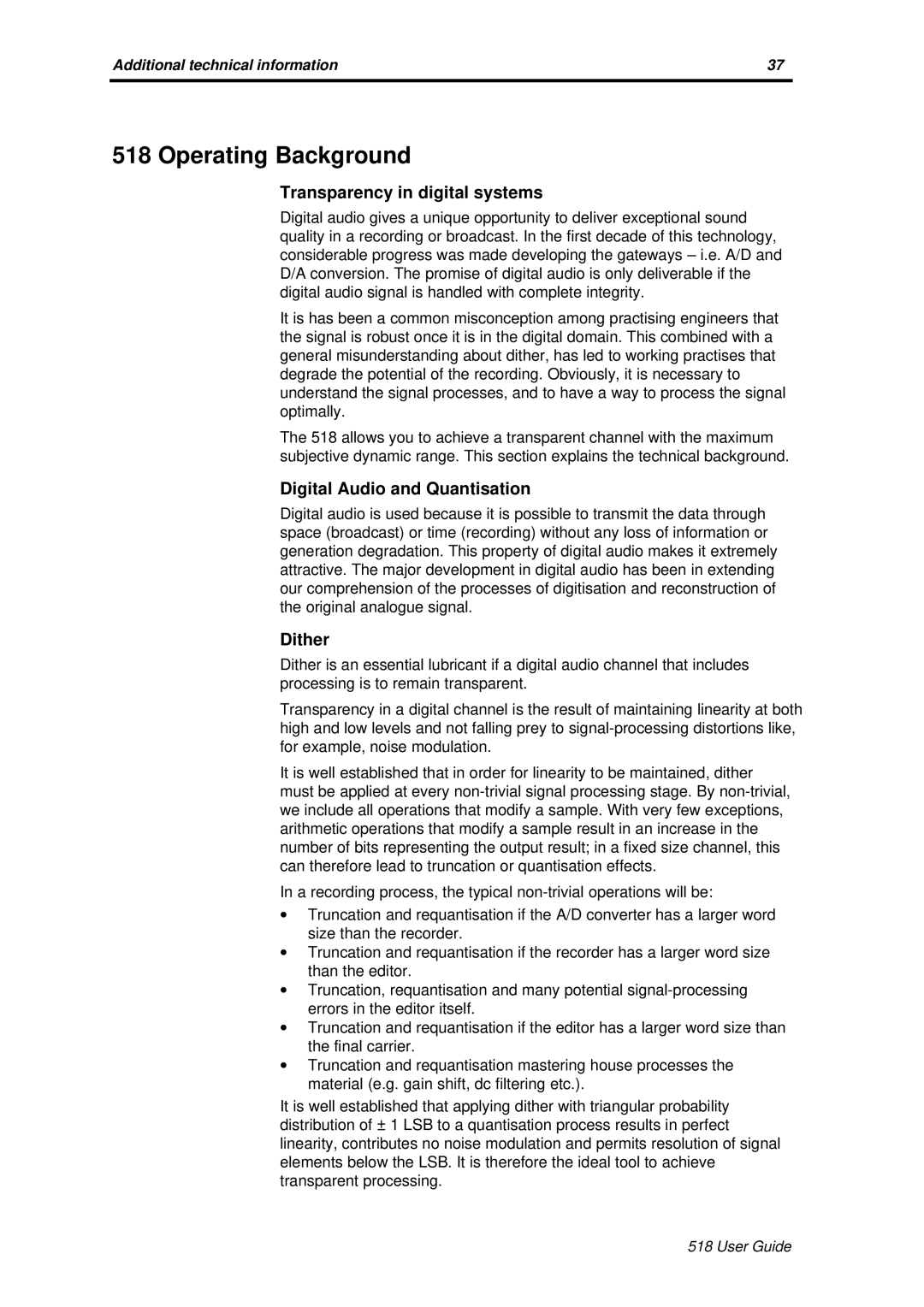Additional technical information | 37 |
|
|
518 Operating Background
Transparency in digital systems
Digital audio gives a unique opportunity to deliver exceptional sound quality in a recording or broadcast. In the first decade of this technology, considerable progress was made developing the gateways – i.e. A/D and D/A conversion. The promise of digital audio is only deliverable if the digital audio signal is handled with complete integrity.
It is has been a common misconception among practising engineers that the signal is robust once it is in the digital domain. This combined with a general misunderstanding about dither, has led to working practises that degrade the potential of the recording. Obviously, it is necessary to understand the signal processes, and to have a way to process the signal optimally.
The 518 allows you to achieve a transparent channel with the maximum subjective dynamic range. This section explains the technical background.
Digital Audio and Quantisation
Digital audio is used because it is possible to transmit the data through space (broadcast) or time (recording) without any loss of information or generation degradation. This property of digital audio makes it extremely attractive. The major development in digital audio has been in extending our comprehension of the processes of digitisation and reconstruction of the original analogue signal.
Dither
Dither is an essential lubricant if a digital audio channel that includes processing is to remain transparent.
Transparency in a digital channel is the result of maintaining linearity at both high and low levels and not falling prey to
It is well established that in order for linearity to be maintained, dither must be applied at every
In a recording process, the typical
∙Truncation and requantisation if the A/D converter has a larger word size than the recorder.
∙Truncation and requantisation if the recorder has a larger word size than the editor.
∙Truncation, requantisation and many potential
∙Truncation and requantisation if the editor has a larger word size than the final carrier.
∙Truncation and requantisation mastering house processes the material (e.g. gain shift, dc filtering etc.).
It is well established that applying dither with triangular probability distribution of ± 1 LSB to a quantisation process results in perfect linearity, contributes no noise modulation and permits resolution of signal elements below the LSB. It is therefore the ideal tool to achieve transparent processing.
518 User Guide
